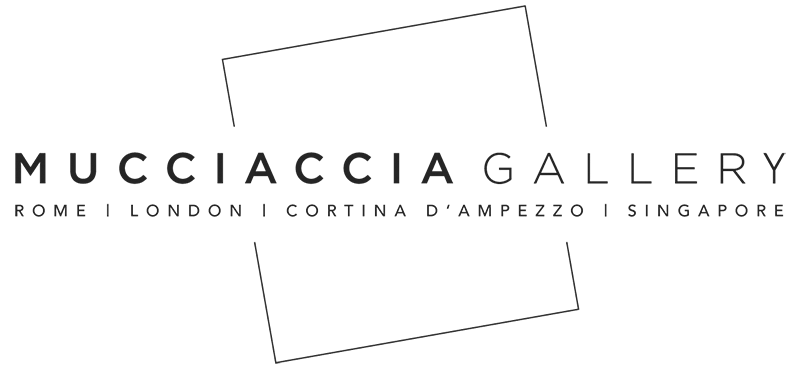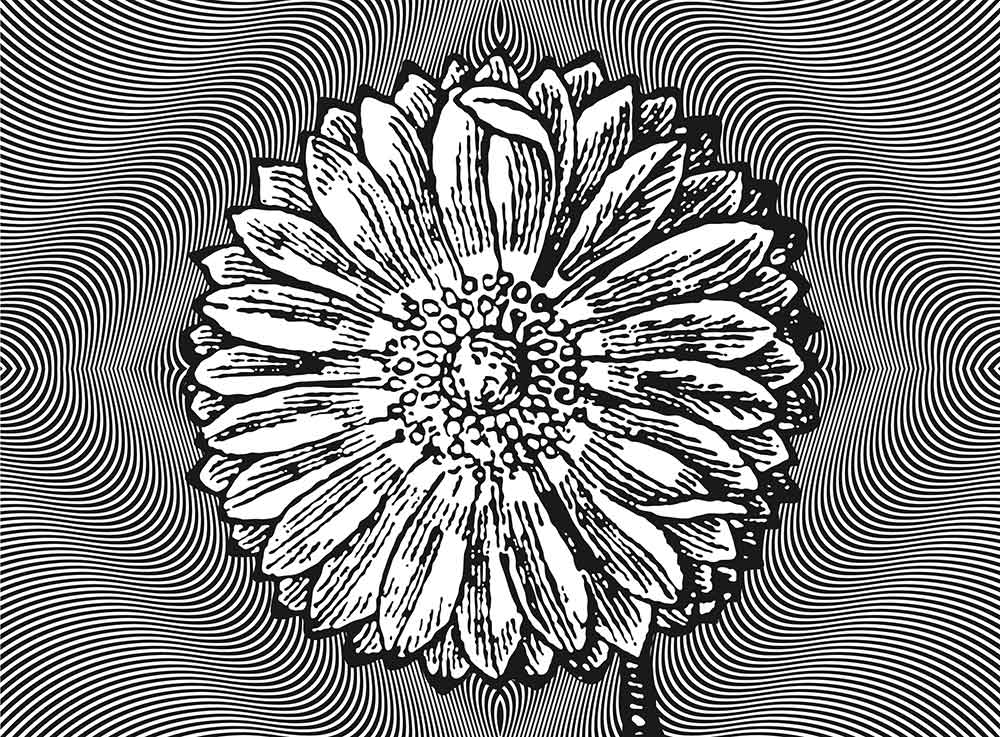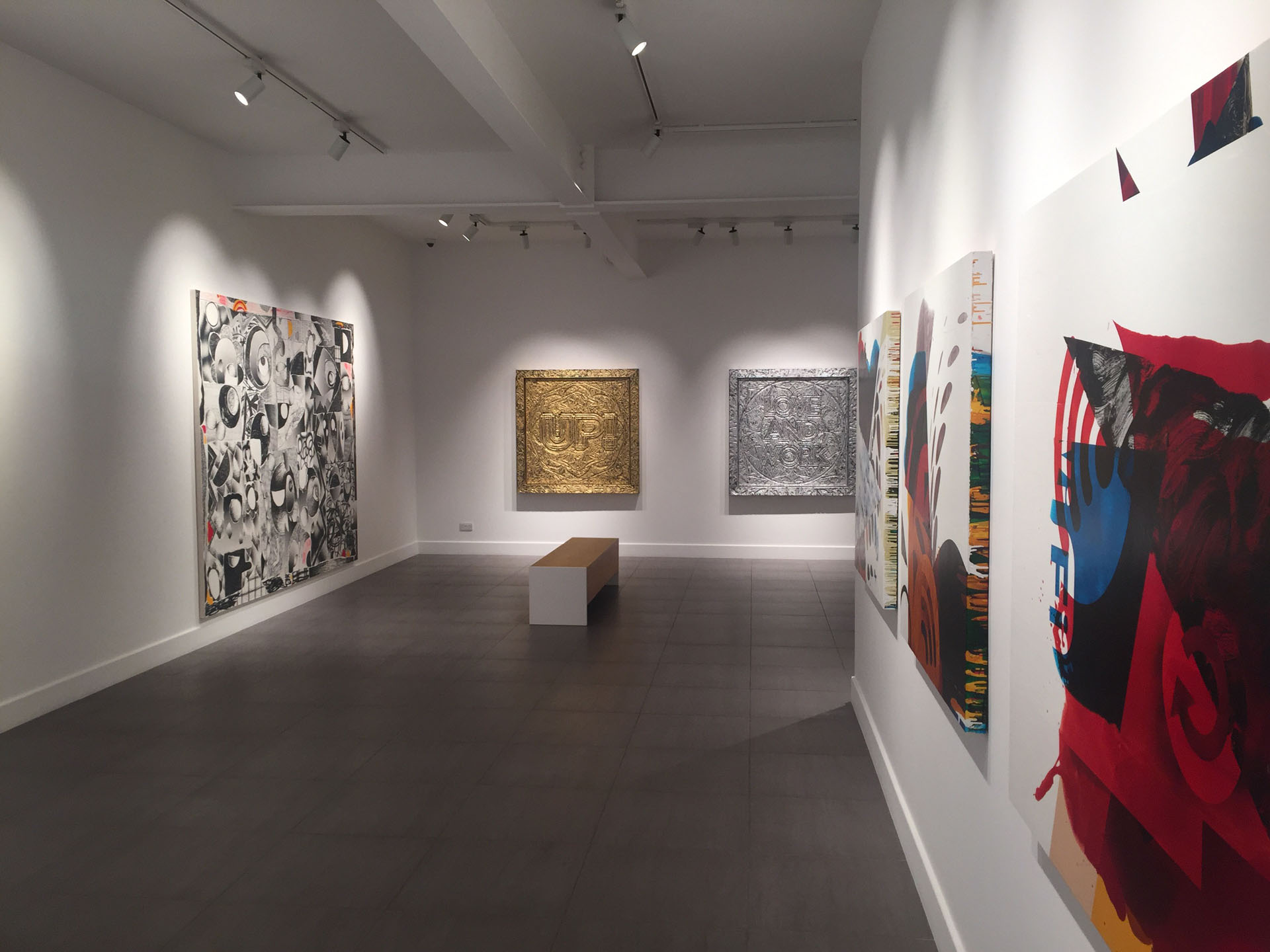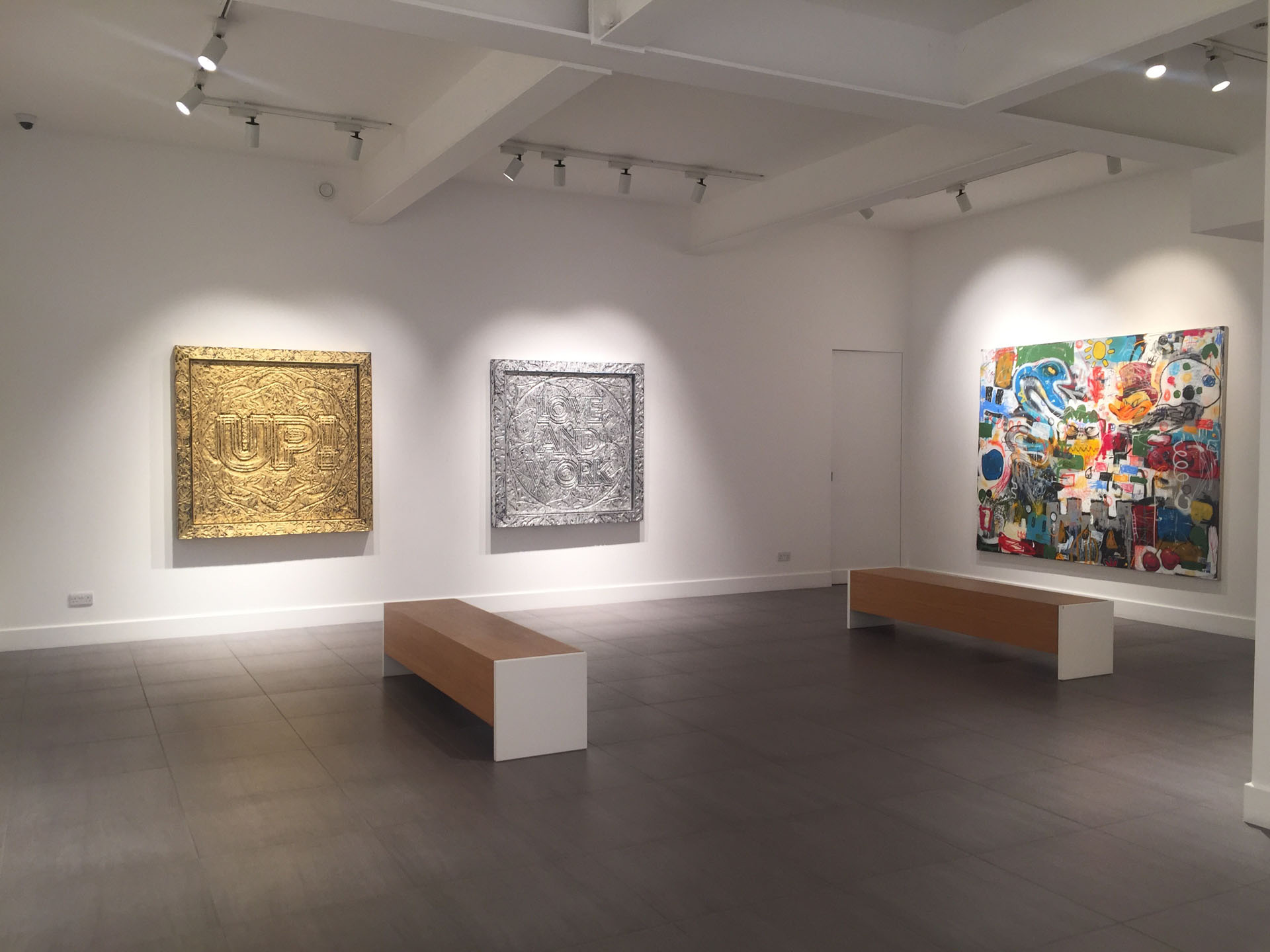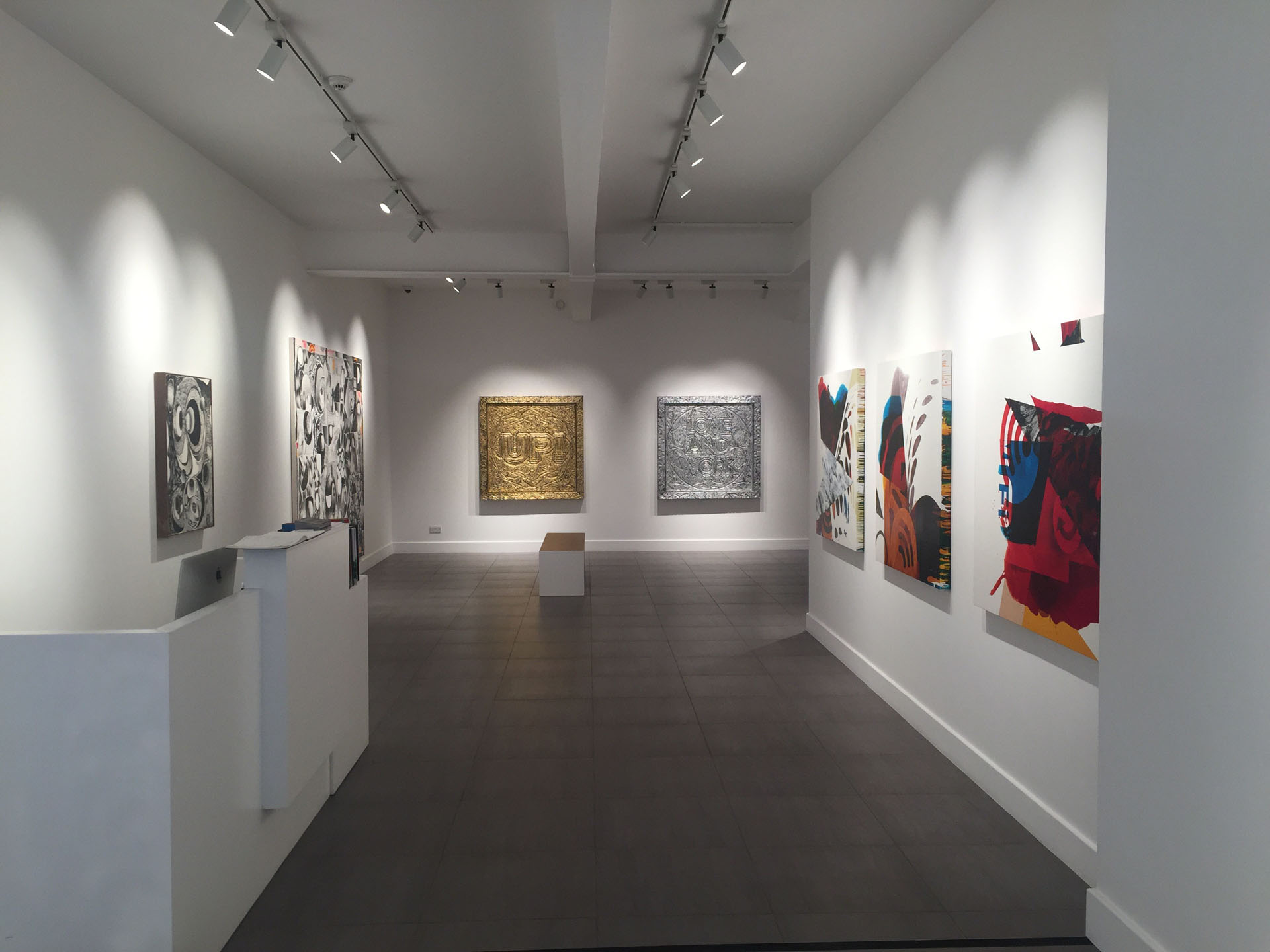SUPERIMPOSITION
Paul Morrison, Barry Reigate,
Michael Stubbs, Mark Titchner
LONDON | MUCCIACCIA GALLERY
8 June 30 September 2022
Press Release
Superimposition, a group show featuring four leading contemporary British painters, opens at Partners & Mucciaccia London gallery on June 15. Paul Morrison, Barry Reigate, Michael Stubbs and Mark Titchner are united by an awareness of the rich tradition of painting in Britain and beyond, plus the will to show the medium is alive and well in the 21st Century.
The exhibition takes its title from the concept of superimposition. Derived from the Latin word superimponere, meaning “to place over” or “to place above”, it is mostly associated with the world of graphics, when one image is layered on top of another to partially or totally cover the previous one, sometimes using different materials. Superimposition is a process based intervention; one layered or mapped act follows the previous one to reveal the final composition.
There has been a strong historical impulse towards superimposing in British art. It dates back via the Pop art collages of Richard Hamilton and his peers, pieces of merz assemblage by Kurt Schwitters in the 1940s, to the abstract paintings of Ben Nicholson. These precedents often seem to occupy separate strata in one single piece.
All four of the artists in this exhibition are finding expanded ways to embrace superimposition using the medium of paint. M i c h a e l S t u b b s is perhaps closest in outcome to the Pop artists and abstractionists of the 20th Century, piling up riotous fragments and configurations of over-layered colour, whilst simultaneously introducing graphic logos. His preference is for household paints and coloured floor varnishes and to view his paintings is to be involved in a compulsive game of both revealing and hiding buried imagery.
For Mark Titchner – a 2006 Turner prize nominee – superimposition tends to be verbal. He writes phrases and ideas onto his works, duly transforming not just their appearance but their meanings. In numerous, large-scale public projects he might also be said to be superimposing his texts onto the streets – and indeed, people’s lives. Titchner’s words are taken from song lyrics, corporate mission statements and the maxims of revolutionary socialism. The viewer knows that he or she is being asked to ironically respond to them, but quite how and why is never clear.
Barry Reigate’s method is to apply acrylic paint to canvas with an airbrush. His work combines street art aesthetics, merging cartoon characters with disembodied limbs and passages of purist abstraction. Its many elements don’t simply compete for our attention but seem to fight with each other in a race “upwards” to occupy the picture surface.
Finally, Paul Morrison’s striking, black and white paintings find their inspiration in old, topographical engravings and botanical illustrations. Using digital software – and often scaling up, cropping and/or distorting his source material – he seamlessly combines different elements from different imagery creating a surreal, monochrome universe:
“These four artists operate at the interface of popular culture and aesthetics,” say Superimposition’s curators, Catherine Loewe and Michael Stubbs. “Through distinct, highly individual processes, each one employs a free-style play of forms and idioms, extracted from the cultural zeitgeist of the early years of the 21st Century. Yet their work is also underpinned by an awareness of, and deep affection for, the rich repository of British art from the previous century.”
Morrison, Reigate, Stubbs and Titchner all know each other, but this is the first time they have exhibited together. All received training in British art schools and have developed practices that reflect the less stable, rapidly shifting sands of contemporary culture and technology which they explore playfully and diversely.
Artists’ biographies:
Paul Morrison: born 1966 in Liverpool, UK; lives and works in Sheffield, UK. The highly recognisable work of English artist Paul Morrison is characterised by monochromatic appropriated botanical imagery. These boldly rendered landscapes are modified, magnified and distorted, appearing through various mediums in paintings, site-specific wallpaintings, sculptures, drawings, prints and films. Morrison takes inspiration from art history books, timeworn engravings, botanical illustrations, comics, animations and found images from diverse sources referencing Malevich to Marathon Man, Dürer to Disney and Breughel to Black Sabbath. As a result, Morrison’s work vividly recalls a conglomeration of Alice in Wonderland, the Audubon Society, Op Art, comic book clips and The Night of the Hunter. His unique brand of razor sharp hard edge painting is typified by a work
like Psychotrope, 2012, which features an oversized image of an archaic flower print hovering in front of a pulsating optical background. Morrison received his MA (with distinction) from Goldsmiths in 1998. He has exhibited extensively in the UK and internationally. Selected solo exhibitions include Stadtgalerie, Saarbrücken, Germany, 2017; Open Eye Gallery, Liverpool, UK, 2014; Millennium Gallery, Sheffield, UK, 2012; Las Vegas Art Museum, Las Vegas, NV, 2008; The Contemporary Museum, Honolulu, HI, 2006; Irish Museum of Modern Art, Dublin, Ireland, 2003; Kunsthalle Nürnberg, Nürnberg, Germany, 2002 and Hammer Museum of Art, Los Angeles, CA, 2000. Selected group exhibitions include, Gesellschaft für Gestaltung e.V., Bonn, Germany, 2018; Saatchi Gallery, London, UK, 2014; Belvedere, Vienna, Austria, 2012; Albright Knox Art Gallery, Buffalo, NY, 2008; The Museum Of Modern Art, New York, NY, 2006; Tate Britain, UK, 2004. His work is held in numerous international collections including British Council Collection; Elgin Museum, Istanbul, Turkey; Fogg Art Museum, Harvard University, Cambridge, USA; Museum of Contemporary Art, Denver, USA; Museum of Modern Art, New York, USA; Städel Museum, Frankfurt, Germany; Victoria and Albert Museum, London, UK.
Barry Reigate: born in London, UK, in 1971; lives and works in London. Barry Reigate is known for his visually dense highly coloured canvases which integrate pop, fetishism and expressionistic formalism to create a riotous effect. By utilising the methods of graffiti he addresses not only the way graphic art has come to define much of our visual language but the hierarchical notions of high art and popular culture. In Reigate’s recent work he continues to employ the airbrush extracting the cartoon elements to allow greater emphasis on abstract form and line. Reigate revels in executing shapes, doodles and squiggles pared down to monochrome palettes, which cover every inch of the canvas, reminiscent of ‘automatic’ surrealist drawing. Reigate completed his BA in Graphic Design and Fine Art from Camberwell College of Arts (London), and an MFA from Goldsmiths in 1997. Reigate has exhibited in numerous group and solo exhibitions in the UK, Europe, and abroad. He has been the solo artist in recent shows in London and Amsterdam, such as: ‘Do Zombies Dance to Love in C Minor?’ at Castor Projects, London, 2017; ‘One Cannot Get Fingerprints From a Rock’ at Alex Daniels- Reflex Gallery, Amsterdam, 2014, and ‘Happiness’, Paradise Row, London, 2008. His work
has featured in group exhibitions, such as Cloud Concrete at Unit 1 Gallery, London, 2017; Ghetto Anglaise at the Observer Building, Hastings, UK, 2016; and Banksy’s Dismaland in Weston-super-Mare, 2015. Reigate was included in Newspeak: British Art Now, Saatchi Gallery, London, 2010; which travelled to Hermitage Museum, St Petersburg, 2009 and Gallery of South Australia, Adelaide, 2011; London Twelve, City of Prague Gallery Prague, 2012; and Rude Britannia: British Comic Art, Tate Britain, London, 2010.
He also collaborates with high-end retail brands, such as Louis Vuitton, Stella McCartney, and Saks Fifth Avenue where he was commissioned to create a 200 ft mural in 2016.
Michael Stubbs: born in Rustington, England, in 1961; lives and works in London.
Working at the interface of abstraction and pop, Michael Stubbs combines pouring techniques with hard-edged lines and graphic stencils to force a collision of styles that creates a challenging visual language. The paintings are made on the floor.
Stubbs pours household eggshell, gloss paints and tinted floor varnishes over ready-made adhesive stencils. The stencils are peeled off when dry and the process is repeated again and again to develop both an optical and material layering effect. Displaying a heady mix of opaque and transparent planes that!give way to contrastingly delicate and bold passages, the resulting flat on flat surfaces resemble stratums of windows programmes from the digital screen. Stubbs achieved his Fine Art PhD at Goldsmiths in 2003, MA Fine Art Goldsmiths, 1990.
He has since exhibited extensively in London, as well as across the UK and internationally. Solo exhibitions include Cornerstone Gallery, Liverpool University, UK, in 2017; Hollenbach Gallery in Stuttgart, Germany, 2015; Fireeye Shift, Laurent Delaye Arts Projects in London, 2015; Cass Gallery, London Metropolitan University, 2013, Rod Barton Gallery, London, UK, 2009; Baro Cruz Gallery, Sao Paulo, Brazil, 2007; Hollenbach Gallery, Stuttgart, Germany, 2006; Marella Contemporary Art, Milan, Italy, 2005. Recent group exhibitions include: Malevolent Eldritch Shrieking, AttercliffeTM, Sheffield, UK, 2018; Destroyed by Shadows, Cornerstone Gallery, Liverpool, 2018; Collateral Drawing Archive, Brewery Tap
Project Space, Folkestone Triennial, 2017; and The Colour Suggestion: Between Abstraction and Figuration, Oscar Cruz Gallery, São Paulo, Brazil, 2017.
Additionally, his work is in public collections including those of the De van den Broek Foundation/Lisse Art Museum, UK Government Art Collection, the British Council and BBC Soho House London.
Mark Titchner: born in 1973, in Luton, UK; lives and works in London, UK. His work involves an exploration of the tensions between the different belief systems that inform our society, be they religious, scientific or political. Focusing on an exploration of words and language, in recent years much of his production has been based in the public realm both in the UK and internationally. These public works have often been created from extended group activities, working particularly with young people. Titchner was a nominee for the Turner Prize in 2006 for a show at the Arnolfini, Bristol, in which he displayed the sculptural installation “How to Change Behaviour (Tiny Masters of the World Come Out)”. The Tate Gallery described his work as “… hybrid installations furthered his exploration into systems of belief. Working across a wide range of media, including light boxes and extraordinary hand-carved contraptions, his work continues to interweave a vast array of references from heavy metal lyrics to philosophy”. In 2007 he was included in the 52nd Venice Biennale exhibiting in Ukraine’s Pavilion, A Poem about an Inland Sea. Solo exhibitions include ‘Mark Titchner’, CGP/Dilston Grove, London, 2014; ’Please Believe These Days Will Pass’, The Young gallery at The Art Gallery
of Ontario, Canada, 2012; ‘Be True to Your Oblivion’, New Art Gallery, Walsall, 2011; The Age of Happiness, Hellenic American Union, Athens, 2009; and ‘Run Black River, Run’, BALTIC, Gateshead, 2008. He was the Art Gallery of Ontario’s Artist-in-Residence from September to October 2012. His work is held in the permanent collections of the South London Gallery, the United Kingdom Government Art Collection the Tate Gallery, the Arts Council and the British Council.
Press Office:
Priscilla Granozio/Tailor Press, email: priscilla@tailorpress.co.uk
Location
21 Dering Street – W1S 1AL London
For more information
Tel. +44 (0) 20 3302 3440
london@mucciaccia.com
www.mucciaccia.com
New guidelines for visiting the gallery.
For the safety of our visitors and staff, we will carefully monitor entry to the gallery. A limited number of visitors will be permitted within the gallery. Visitors must wear masks and maintain a two meter distance.
PHOTO GALLERY
Address
MUCCIACCIA GALLERY | LONDON
21 Dering Street
London W1S 1AL
Tel. +44 20 3302 3440
london@mucciaccia.com
Opening Hours
Monday – Saturday: 10am – 6pm
Sunday closed
